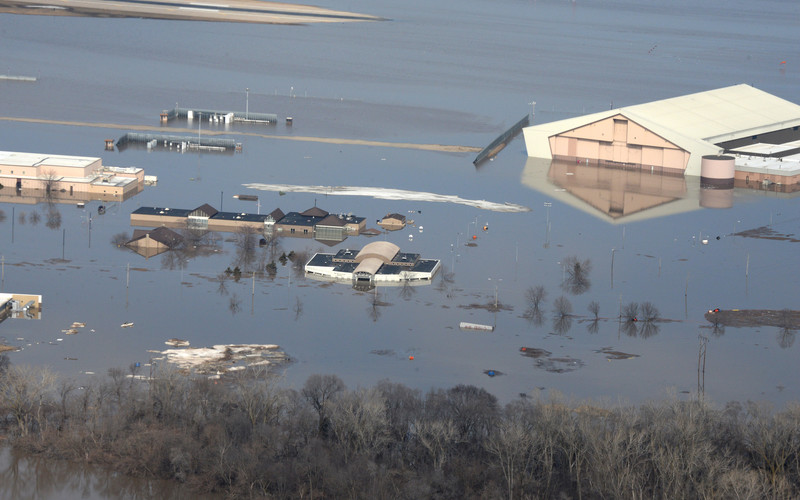“We focused on the expensive equipment. We didn’t have the manpower to collect PCs, which are easily replaced,” says Maj. Mike Scott of the 55th Communications Squadron, who led the effort. “We told organizations, ‘If you are concerned about your PCs and have a place to move them, please do so. Otherwise, at least move it on top of your desk.’”
They initially tried to label the network cables so the staff would know where each of them went. “But as we started to run out of time, we were just pulling and grabbing,” he says.
The squadron moved IT equipment around the clock until buildings took on water that Saturday night. Some mission-critical facilities had to remain operational until they were forced out by the flood. “We couldn’t pull some devices until the very last minute,” Scott says.
MORE FROM FEDTECH: Find out how fog computing can help your agency.
Offutt Air Force Base Keeps Operations Running
The flood water, caused by record snowfall followed by a rapid melt, overwhelmed existing levees and the makeshift barriers. The result: $420 million in damage at Offutt alone.
Damage across the six most affected states totaled more than $1 billion, and the final amount has yet to be calculated, according to the National Weather Service.
One-third of the 4.3-square-mile base was flooded, including 137 structures and 44 occupied buildings with 1.2 million square feet of office space, including the 55th Wing’s headquarters. Fortunately, no major IT infrastructure or critical data was lost because the base’s data centers are located elsewhere on the base, says Scott. The squadron’s efforts did save $1.7 million worth of IT equipment, and another $3 million worth of satellite communications equipment.
In the immediate aftermath, base leadership prioritized getting mechanics back online first, so they could perform maintenance on jets and make them available for pilots.
The Communications Squadron’s IT team quickly turned the base’s community center into a makeshift office for 200 personnel by installing four spare Cisco switches and equipping staff with new laptops from storage.
The squadron also created temporary offices for the rest of the 3,200 displaced personnel in the base’s community center, hotel and conference center. They used spare technology housed in storage, including Cisco switches and Windows laptops.




_0.jpg)












